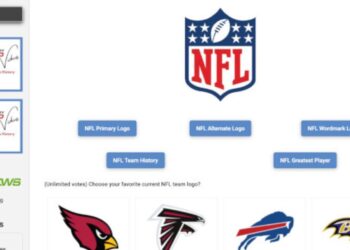Advanced analytics in sports have enabled us to transcend boundaries we wouldn’t have thought possible. Today, smart data annotation has leveled up the sports landscape across all categories.
From injury mitigation to precise strategy making, advanced analytics in sports allow us to leverage the power of technology for decision-making, technique improvement, and risk aversion in sports.
This technology is a shift in the traditional approach to sports; it brings improved performances and enhanced analysis of all sports parameters, eradicating the need for guesswork through data-driven decision-making and precise analysis of every game aspect.
How Does Smart Analysis Impact How Sports Work Today?
Staying updated with the latest innovations is a cornerstone of excellence. Sports are no different. Data annotation in sports allows for the advanced and efficient performance of AI models used in sports today.
Machine learning algorithms, advanced statistical models, and even predictive analysis are leveraged to enhance performance in the field.
The analysis includes detailed metrics for enhanced functions, such as:
- Time series analysis
- Video analysis
- Performance tracking systems
- Cluster analysis
- Training insights and optimization
- Statistical analysis
These are just the tip of the iceberg. Data analytics opens many opportunities to translate raw data into insightful systems. These analytical services help formulate data-based decision-making strategies and perform accurately and precisely to improve players’ performance.
Advanced analytics in sports is not just limited to player tracking. It encompasses efficient training approaches, player biometrics, comprehensive performance analysis, wearable technology, and more.
The next wave of sports analytics will be AI-driven, where AI can track and see patterns in data that were not previously measured or seen. These new AI models will leverage sports data annotation to track everything from players’ movements, time with and without the ball, where shots were taken from, how many times a player passed the ball, got beaten by an opponent, and more. The more annotations added to an AI data model, the more insights coaches, players, and fans will uncover, revealing a wealth of fantastic information.
If you’re looking to step up in your sports journey and want to leverage the potential of advanced analytics in sports, exploring the possibilities of sports data annotation can unlock endless opportunities for precise player tracking, advanced statistical analysis, and training optimization.
Advanced Analysis and Different Sports
Every sport is different, and different sports require different approaches for analysis and interpretation.
Let’s explore how different sports leverage data analysis to exceed their potential.
Soccer
Soccer is a highly intensive sport, yet advanced data analytics succeed in interpreting its nuances. It utilizes actions on the field, player movement, accelerations, sprints, workload movement efficiency, and physical exertion analysis to provide valuable insights. These insights improve aspects that might have been overlooked and improve the players’ techniques.
Ice Hockey
Systematic and advanced analysis of collisions, extreme movements, and precise tracking when on the ice exponentially improve sports efficiency.
Motorsport F1
F1 is a brilliant opportunity for advanced analytics in sports to contribute to its improvement. Data analytics play a huge role in speed tracking and analyzing racer performance in this highly technical sport, including lap durations and fuel efficiency.
Basketball
The infamous sport of basketball has become a hub for advanced sports analytics. On-court movements, player performance, endurance, and precise movement analysis provide valuable information.
Advanced analytics can be used to gain a cutting edge over competitors. This technology can also analyze workload and recovery metrics, providing a holistic approach to sports analytics.
Rugby
Rugby is no different from any other sport. It uses movement tracking, collisions, and impacts to formulate strategies and improve techniques. Analyzing Tackles and Ruck’s contributions helps gauge the dynamics and formulate efficient techniques and strategies.
Advanced Analytics in Sports allows teams to reach their maximum potential. By making better-informed decisions through data-driven decision-making, teams can leverage technology and their skills to produce excellent performance and maximum efficiency.
Example of Advanced Analytics Adaptations in Sports
Now that we know how different sports use analytics to achieve brilliance let’s explore some actual adaptations.
NBA adopted Player Tracking
The renowned National Basketball Association now leverages real-time player tracking. This marks a remarkable shift in how sports work, contributing to efficient movement tracking, player efficiency, and defense strategy formation.
The Leicester City
Leicester City is a testament to how advanced analytics in sports are Transforming this sphere and taking it to new heights. The 2015-16 UK League Champions used data analytics for strategy formation and player selection.
Advanced analytics in sports has undoubtedly revolutionized the way we perceive sports. They improve efficiency through analytical decision-making and provide insights into valuable aspects of the game.
In addition to everything we’ve discussed, analytics improve risk aversion and injury management. Athletic pursuits require efficient injury management systems, and including analytics in this arena helps teams avoid certain pitfalls and manage injuries proficiently.
Conclusion
Advanced data analytics have unlocked a new level of efficiency and performance analysis, which benefits everyone in the sports venture.
Future trends like augmented reality (AR), Internet of Things (IoT) devices, and AI will continue to reshape our world and bring about changes that inspire.
Besides real-time data and movement tracking, this technology also enables players to mitigate challenges and formulate training that will work for them. This allows teams to focus on what’s essential, thus substantially enhancing their skills.









